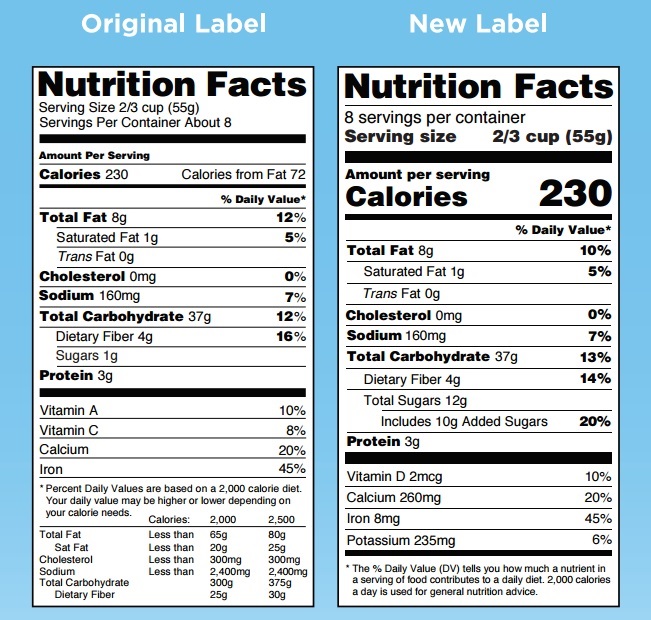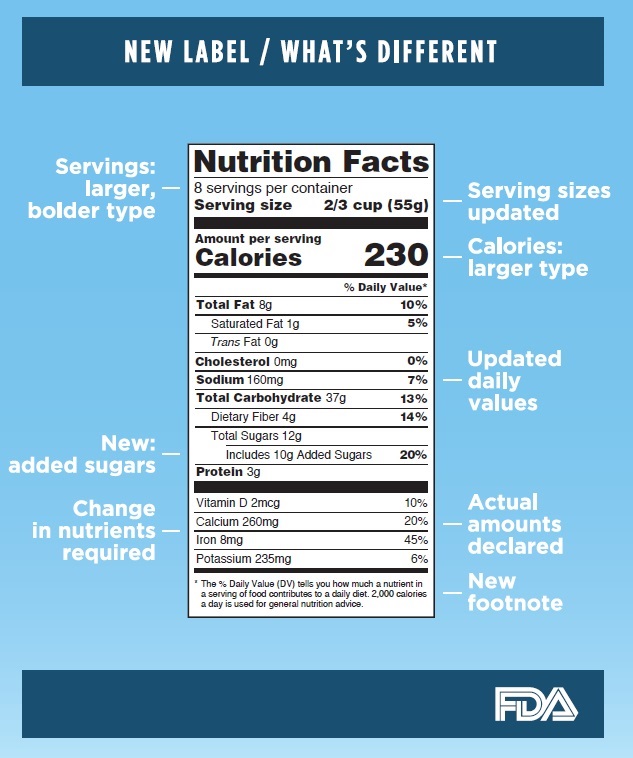April 7, 2020 by John Fernandez
FDA Unveils Revamped Food Label With ‘Added Sugars’ as a New Feature

The U.S. Food and Drug Administration released its long-anticipated new food label today. The updated “Nutrition Facts” panels will include new details on how much sugar is added to packaged foods as part of a campaign to help Americans reduce their risk of obesity, diabetes and heart disease.
The new label offers several helpful changes for consumers, says Lucette Talamas, registered dietitian, who focuses on community health with Baptist Health South Florida.
‘High in Empty Calories’
“In addition to showing us the amount of total sugars, now the label tells us how much of that sugar comes from added sugars,” she says. “We know products with added sugars tend to be low in nutrients and high in empty calories.”
The high amount of added sugars in the average diet has come under fire from a long list of health advocates, including the American Heart Association, the American Academy of Pediatrics, the Institute of Medicine and the World Health Organization. Those groups recommend decreasing the amount of added sugars consumed each day.
With the new label details, consumers now have answers to important questions, Ms. Talamas says.
1) Does this item have added sugar?
2) How much added sugar?
3) What percent of the daily recommended value does the product contain in terms of added sugar?
Food manufacturers are required to use the new food labels by July 26, 2018, marking the biggest changes to the iconic “Nutrition Facts” label, which was introduced more than 20 years ago to help consumers make informed food choices and maintain healthy diets. (See new food label samples below.)
“In addition to added sugars, new nutrients that must be declared include Vitamin D, which is important in bone development, and potassium, which is good for controlling blood pressure; both nutrients of which people aren’t getting enough,” FDA administrator Robert Califf, M.D., said in a blog post.
The list of nutrients that are required or permitted to be declared by food manufacturers is being updated. Vitamin D and potassium will be required on the label. Calcium and iron will continue to be required. Vitamins A and C will no longer be required, but can be included on a voluntary basis.
Calories From Fat
The food labels are still required to display “Total Fat,” “Saturated Fat,” and “Trans Fat.” However, “Calories from Fat” is being removed because research shows the type of fat is more important than the amount, the FDA said.
Those key pieces of information, Ms. Talamas says, will help consumers make informed decisions while meal planning, food-shopping and calorie counting.
The new Nutrition Facts label will also include:
- An updated design to highlight “calories” and “servings.”
- Requirements for serving sizes that more closely reflect the amounts of food that people currently eat. By law, the Nutrition Labeling and Education Act, requires that serving sizes be based on what people actually eat.
- Declaration of grams and a percent daily value (%DV) for “added sugars” to help consumers know how much sugar has been added to the product. The FDA says: “It is difficult to meet nutrient needs while staying within calorie limits if you consume more than 10 percent of your total daily calories from added sugars, and this is consistent with the scientific evidence supporting the 2015-2020 Dietary Guidelines for Americans.”
- “Dual column” labels to indicate both “per serving” and “per package” calorie and nutrition information for certain multi-serving food products that could be consumed in one sitting or multiple sittings.


top stories












There are no comments